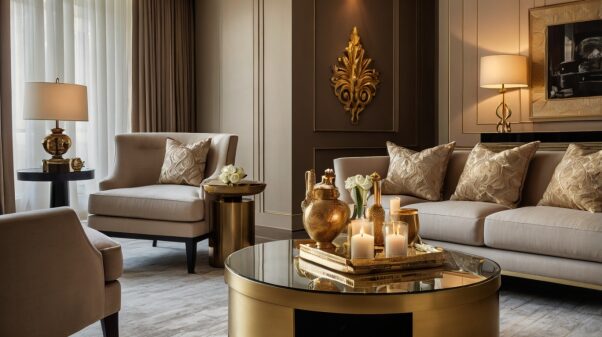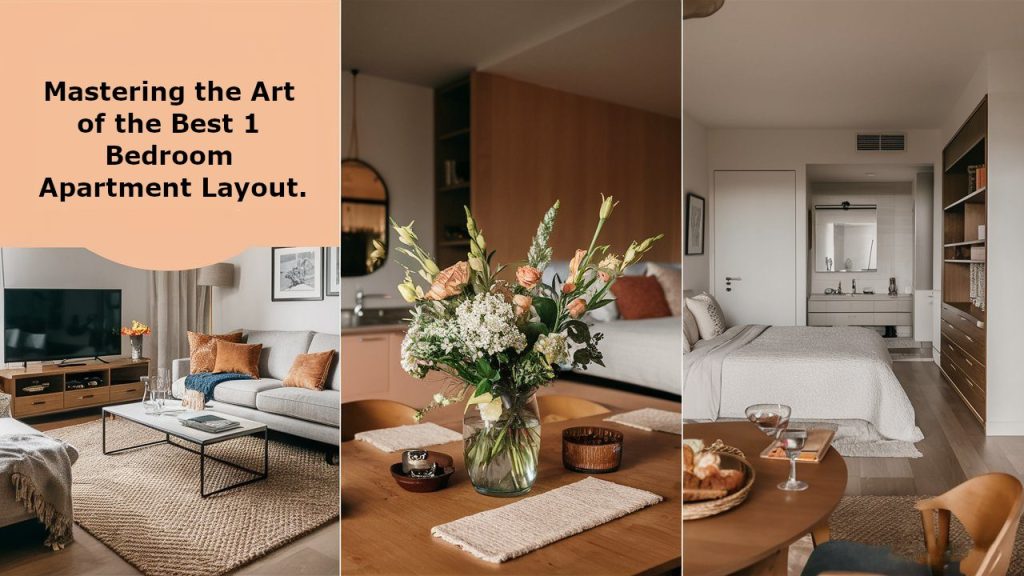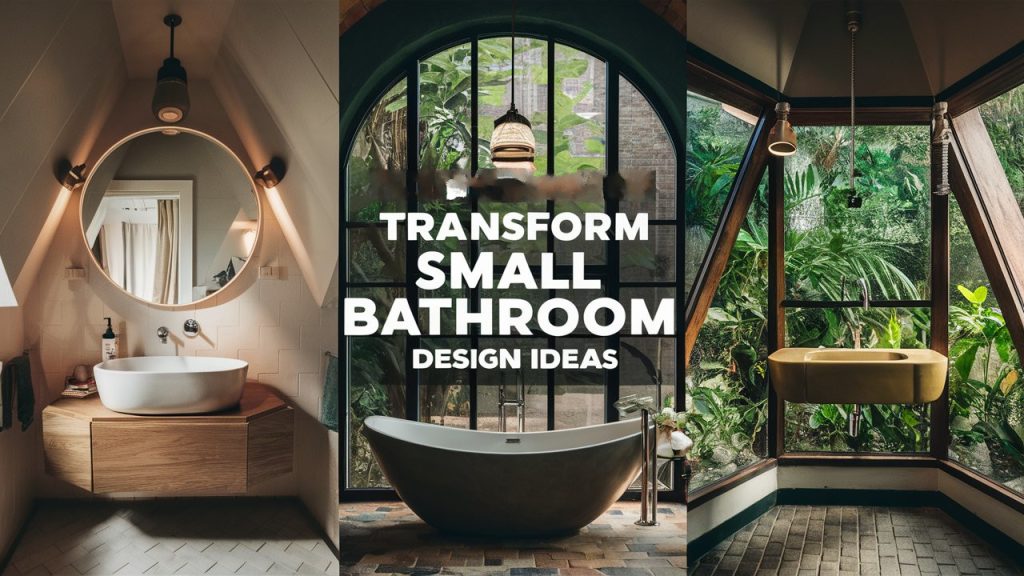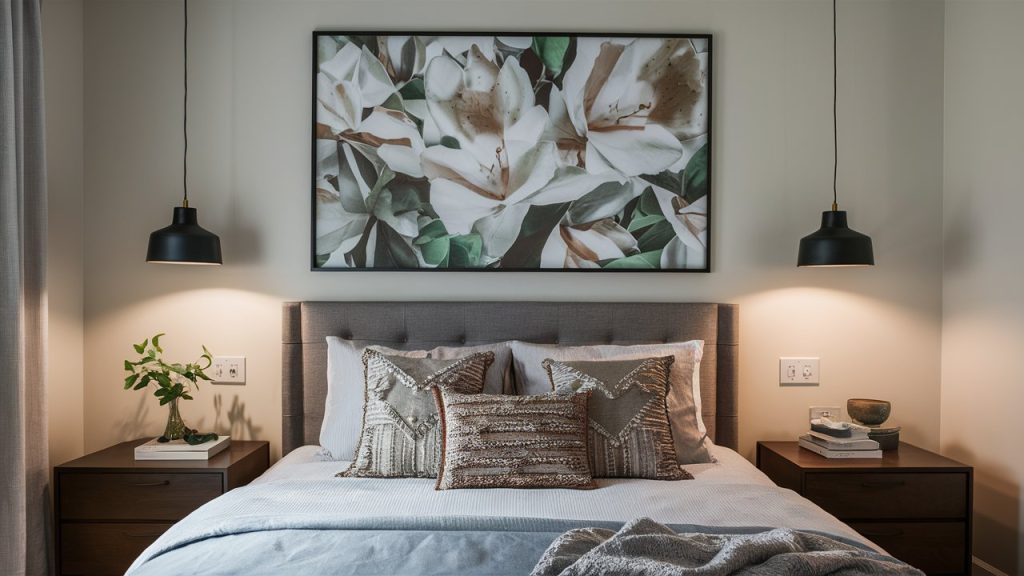In both commercial and residential design, the living room coffee table decor serves as a visual anchor—quietly dictating tone, mood, and style. It’s where a room’s personality gets to speak in small, elegant bursts. Whether you’re designing a welcoming hotel lobby, a boutique waiting area, or staging a model apartment, the decor on your coffee table plays a strategic role in shaping perception and enhancing guest experience.
Interior stylists and furniture retailers understand this power firsthand. A simple coffee table can transform into an engaging centerpiece with the right combination of textures, heights, and thematic accents. It’s the sweet spot between aesthetics and utility, between mood-setting and messaging. Done right, this often-overlooked surface becomes a storytelling canvas—a chance to reflect brand identity or infuse emotion into a space.
When sourced smartly and styled with intention, coffee table decor doesn’t just look good—it works hard. It draws attention without demanding it, adds layers without clutter, and provides function without compromising design. The result? A room that feels curated, intentional, and above all, memorable.
Key Takeaways
Table of Contents
Why Living Room Table Decor Matters in Commercial Spaces
The coffee table may seem small, but in the world of commercial design, it plays an outsized role. In hotels, lounges, office lobbies, and even retail waiting rooms, guests form subconscious impressions in the first seven seconds. A beautifully styled coffee table signals attention to detail, reinforces brand values, and enhances the perceived quality of the space.
In real estate staging, for example, studies have shown that a well-decorated living room—especially the coffee table—can increase a buyer’s emotional connection to the home. It helps potential buyers envision themselves living there, making the space feel welcoming and lived-in without being overly personal.
A boutique hotel in Charleston opted for living room tables topped with vintage books, textured glass candles, and handmade ceramic dishes. The combination brought together the brand’s Southern heritage with a contemporary, eco-conscious ethos. Guests often left positive reviews commenting on the cozy, curated feel—small touches that translated to big impact.
Conversely, a coworking space in Chicago took a more minimal approach. The designers used black metal trays filled with branded items (like pens and booklets), combined with angular vases to align with the modern-industrial vibe. The result? A clean yet inviting environment that supported productivity while maintaining aesthetic interest.
In all these examples, coffee table decor didn’t merely occupy space—it defined it.
Understanding Design Styles and Their Impact on Table Decor
Design coherence is critical. The coffee table must reflect and enhance the overall design scheme of a space—whether it’s modern, rustic, minimalist, or luxe. Without consistency, even the most beautiful table can look out of place.
Modern Minimalism often demands clean lines and restrained elements. Think a low-profile ceramic bowl in matte black, a sleek coffee table book, and a subtle glass paperweight. These choices mirror the uncluttered feel of the room and echo architectural cues.
Rustic Farmhouse styles call for warmth and organic textures. Here, decor might include distressed wood trays, preserved lavender bundles in vintage jars, and repurposed tin candle holders. Each item carries a story—an aesthetic of authenticity that resonates especially well in boutique lodging or farm-to-table dining spaces.
Industrial Chic spaces thrive on contrast. Use of metal, leather, and reclaimed materials defines this theme. A table in such a setting may feature a steel tray, a concrete planter, and Edison-style bulb in a cage lamp—emphasizing utilitarian charm.
Eclectic Luxe, on the other hand, welcomes boldness. Imagine a gold-trimmed mirrored tray, stacked art books with velvet covers, and crystal or glass objets d’art. This style works beautifully in upscale salons, hotels, and curated residential units.
Each style isn’t just an aesthetic—it’s a communication tool. When your coffee table aligns with your room’s visual language, it amplifies the message you want to send.
Curating Coffee Table Decor by Theme and Season
Rotating decor by theme or season breathes fresh energy into spaces—without requiring full redesigns. This strategy is especially useful for commercial spaces that want to stay relevant, festive, or emotionally engaging year-round.
Spring often calls for lightness and renewal. Decor might include pastel ceramic vases with tulips, marble trays, and airy linen runners. It’s an ideal vibe for cafés and salons during the fresh-start season.
Summer favors coastal influences—think seashells in clear jars, woven baskets, and bright, geometric-patterned coasters. In beachside resorts or vacation rentals, these themes help reinforce location and relaxation.
Fall introduces warmth. Copper candle holders, mini pumpkins, and thick coffee table books with textured covers are great additions. Real estate agents often use fall decor to create a “homey” atmosphere during open houses.
Winter leans into coziness. Faux fur mats, pine-scented candles, and deep, jewel-toned glass objects bring seasonal richness. This approach works beautifully in ski lodges, upscale retail lounges, and boutique hotels.
By embracing seasonality, you extend the shelf-life of each space. It keeps return guests engaged and allows you to align decor with events or holidays—enhancing the emotional resonance of your setting.
Solutions for Small Spaces: Functional Yet Stylish Coffee Table Decor
Designing for small spaces is a test of restraint and creativity. The goal is to make the area feel intentional without overwhelming it. A compact coffee table in a studio apartment or intimate hotel suite must offer functionality and visual appeal—without becoming cluttered.
Begin by choosing multi-purpose items. A low-profile ceramic dish can double as a remote holder. Stackable trays allow you to layer while keeping items contained. For lighting, opt for battery-powered candles or compact lanterns that add warmth without cords or mess.
The trick is in vertical styling. Use items of varied heights to draw the eye upward and create a sense of space. For instance, a slender vase with dried eucalyptus, paired with a flat hardcover book and a textured orb, creates visual depth without eating surface area.
Keep color palettes light and neutral. Monochrome themes give the illusion of openness. Mirrors and glass decor help bounce light, making the space feel larger and airier.
Finally, consider furniture that integrates decor—like nesting tables with built-in trays or ottomans with hidden compartments. Every piece must earn its place.
Side Tables, Entry Tables & End Tables: A Cohesive Styling Strategy
While the coffee table may be the star, supporting surfaces like side tables, entry consoles, and end tables deserve their own spotlight. These spaces offer key touchpoints to extend a design story and unify the look of a room. Especially in commercial environments—think lobbies, waiting rooms, or hotel suites—these tables provide mini-vignettes that echo the brand’s voice.
To keep things cohesive, establish a visual rhythm. Use similar materials and complementary colors across all tables. For example, if your coffee table features a marble tray with brass accents, mirror that tone on side tables with smaller brass bowls or coasters. This kind of design mirroring adds subtle sophistication.
Entry tables are your opportunity to make a first impression. A ceramic or glass vase with fresh or dried flowers adds elegance without demanding attention. Flank it with a scented diffuser or framed welcome message for a multi-sensory touchpoint. In high-end residential lobbies or boutique hotels, this small detail elevates the entire guest experience.
Side tables often serve a more utilitarian function, but they don’t have to be dull. Include a tactile element like a textured coaster set or a compact reading light. If space allows, add a decorative object like a hand-carved sculpture or artisanal stone piece.
End tables can balance out larger seating areas. Use them to display objects that invite curiosity: a rare book, a mini globe, or a stylized storage box. These little details show thoughtfulness and elevate even the simplest seating arrangement.
The key is consistency, not repetition. Let each table tell a part of the story without simply duplicating the same decor across all surfaces.

Elegant hotel suite with coordinated side and end table styling
Luxury Looks on a Budget: Sourcing Smart & Styling Smarter
One of the biggest challenges faced by professionals in the interior design and hospitality world is achieving a luxurious feel without overspending. Especially when purchasing in bulk for commercial spaces, it’s critical to strike a balance between aesthetics, quality, and cost. Fortunately, luxury and affordability are no longer mutually exclusive.
Start by identifying versatile, timeless decor pieces that can scale across locations. Items like ceramic vases, woven trays, glass domes, or minimalist candles are widely available through trade programs and offer premium appeal at a lower price point when purchased in bulk.
Many top-tier retailers now offer designer trade programs that provide wholesale pricing and exclusive access to product lines. Here’s a comparison of a few reliable sources:
Supplier | Style Focus | Bulk Discounts | Ideal For |
CB2 Trade Program | Modern/Minimalist | Yes | Urban condos, offices |
World Market B2B | Rustic/Global | Yes | Boutiques, cafés |
Faire Marketplace | Artisan/Handmade | Varies | Specialty hotels, designers |
Four Hands | Industrial/Luxe | Yes | Commercial interiors |
Style smartly by mixing high-end touches with affordable staples. For instance, you can use a designer bowl as the centerpiece while surrounding it with mass-produced yet stylish items like budget candles or bulk-purchased coffee table books. This contrast tricks the eye and delivers upscale vibes.
Also, don’t underestimate thrift or reclaimed items. A vintage wooden tray or unique ceramic piece adds character that mass-market products often lack. Pairing new and old creates visual tension—a trick seasoned designers frequently use to add depth.
If you’re decorating on a tight budget but need high volume, stick to a neutral base. This allows you to swap out small accents seasonally or as branding changes, without redoing the entire table setup.
Crafting Elegant Centerpieces That Command Attention
A well-crafted centerpiece is the hero of coffee table styling. It’s the first thing the eye lands on, and the piece most likely to be interacted with or talked about. Creating a centerpiece that’s elegant yet practical requires understanding scale, symmetry, and storytelling.
Start with a base—a tray or runner that grounds the centerpiece visually. This gives the arrangement borders and prevents it from looking like clutter. Choose materials that match the environment: marble or metal for modern interiors, distressed wood or rattan for rustic themes.
Next, build in layers. Use objects of varying heights and textures to create depth. For example, combine a tall vase with greenery, a medium-height sculpture or candle, and a flat item like a decorative book. This layering principle follows the design “rule of threes,” giving the table a composed and intentional look.
Balance form and function. If your space will host guests—like in a hotel lounge or real estate staging—avoid overly fragile or cumbersome items. Instead, opt for rounded edges, sturdy materials, and easy-to-clean surfaces.
Lighting is your silent design partner. A candle or LED lantern brings warmth and movement to your centerpiece. In commercial settings, flameless options are ideal for safety and maintenance ease.
Color is crucial. Stick with no more than three core tones, ideally aligned with your brand or interior palette. Use accent pieces to introduce contrast—a metallic tray, a colorful art book, or a glass paperweight.
In a staged apartment unit in Miami, a luxury real estate firm used a matte gold tray with a succulent, a perfume bottle, and a branded property brochure. Visitors repeatedly commented on the centerpiece, associating it with high-end, personalized service. This shows how even simple decor can have outsized influence.
Materials That Withstand Time: Durable Decor for High-Traffic Spaces
High-traffic spaces like hotel lobbies, commercial lounges, or retail waiting areas require decor that can take a beating and still look great. In these environments, design is not just about beauty—it’s about performance. Selecting the right materials ensures your living room coffee table decor remains stylish without becoming a maintenance burden.
Glass and tempered glass are perennial favorites for their elegance and ease of cleaning. While traditional glass may chip, tempered varieties are far more durable and shatter-resistant. Used in trays, bowls, or tabletop layers, they add visual lightness and a modern edge.
Solid wood—especially oak, walnut, or teak—offers a balance of strength and sophistication. In farmhouse, rustic, or transitional spaces, wooden trays or decor objects bring in warmth while resisting wear and tear. Opt for sealed finishes to protect against spills or scratches.
Resin and polycarbonate materials are rising stars in commercial decor. Lightweight, moldable, and virtually unbreakable, they mimic the look of ceramic or stone but with added durability. They’re perfect for commercial properties that need stylish decor without fragility concerns.
Metal decor, especially brass, black iron, or brushed nickel, delivers industrial and luxe aesthetics. It’s a favorite in hospitality design because it resists corrosion and adds textural contrast. Use metal in trays, sculptural objects, or candle holders.
Stone and faux stone pieces—like marble coasters, alabaster bowls, or concrete planters—offer natural elegance. While heavier, their solidity can anchor lighter decor and provide tactile interest. Choose engineered stone alternatives when weight is a concern.
The key to longevity in high-traffic spaces is balancing beauty with resilience. A design-savvy coffee table decor strategy incorporates these materials with intention, reducing replacements and maintaining visual appeal.
Coffee Table Styling Case Studies
Let’s put theory into action with real-world examples that demonstrate the transformative power of living room coffee table decor across various commercial settings:
1. Upscale Hotel Lobby – “Luxe Heritage” Theme
Location: Savannah, GA
Design Elements: A round marble table was styled with an antique brass tray, stacked leather-bound books, and a handblown glass sculpture. Seasonal florals in a crystal vase added freshness.
Outcome: Guests consistently praised the lobby’s elegance and boutique charm. It reinforced the hotel’s branding and became a social media favorite among guests.
2. Urban Coworking Lounge – “Modern Minimalist” Theme
Location: Brooklyn, NY
Design Elements: A concrete coffee table featured a matte black resin tray, a low succulent arrangement in a geometric pot, and a motivational quote block in acrylic.
Outcome: The space felt both motivational and calm—perfect for freelancers and startups. The tray also helped reduce clutter by keeping branded materials neatly organized.
3. Model Apartment Unit – “Scandi-Boho” Theme
Location: Austin, TX
Design Elements: A white oak table held a rattan tray with dried eucalyptus, a ceramic mug with faux lattes, and a neutral-toned coffee table book on Scandinavian design.
Outcome: The decor created a lived-in vibe, helping prospective buyers connect emotionally with the space. One agent reported a 30% faster sale time in units styled this way.
These cases show that thoughtful, brand-aligned decor not only enhances beauty but also drives tangible outcomes—higher guest satisfaction, better branding, and faster sales.
Elevating Experience with Final Touches and Guest-Centric Styling
The ultimate goal of living room coffee table decor—especially in commercial spaces—is to create a memorable guest experience. When guests feel relaxed, intrigued, or inspired by a space, they engage more deeply with your brand. That’s the emotional ROI of good styling.
Start with sensory design. Incorporate touchable materials like soft linens or smooth stones. A scented candle or oil diffuser offers olfactory richness. Add visual cues like books, branded content, or art that reflects local culture or your brand’s story.
Interactive decor is another way to enhance experience. For example, a real estate lobby may include a QR code within a tray that links to a property’s digital tour. A boutique café might have a small flipbook with customer stories or sustainable sourcing practices.
In some high-end salons or lounges, stylists have placed small bowls with curated skincare samples or branded mints—functional, decorative, and memorable. The coffee table becomes more than a design element—it becomes a vessel for storytelling and interaction.
Lighting and symmetry offer the final polish. Use lighting to spotlight key decor zones or to cast interesting shadows across your centerpiece. Symmetry makes a table look “finished,” even with minimal elements.
With the right mix of form, function, and feeling, coffee table styling evolves from surface-level prettiness into a key part of the spatial narrative. It helps people feel welcomed, seen, and immersed in your environment.
Frequently Asked Questions
What are popular living room table centerpiece ideas in commercial spaces?
Popular options include layered trays with candles, vases with seasonal florals, and branded or thematic books. The key is combining function with design to match your branding goals.
How can I find modern living room coffee table decor that’s durable?
Look for materials like tempered glass, solid wood, metal, and resin. These materials offer both longevity and a contemporary aesthetic, making them ideal for high-traffic commercial settings.
What are budget-friendly yet elegant coffee table decor ideas?
Use a neutral tray, add faux greenery, stack clearance-sale books, and include artisan-style pieces from marketplaces like Faire or World Market’s B2B programs.
Can minimalist table decor still be visually interesting?
Absolutely. Focus on quality over quantity. A sculptural object, a monochrome vase, and one beautiful book can offer plenty of impact in minimalist spaces.
What’s the best way to decorate coffee tables for seasonal changes?
Keep your base decor neutral and swap out accents like candles, floral arrangements, or trays based on the season. This lets you refresh the look without a full redesign.
Is there a difference in styling coffee tables for homes vs. commercial use?
Yes. Commercial decor must be more durable, easy to clean, and aligned with brand aesthetics. Residential styling can be more personal and experimental.

Robert Martin is a passionate blogger and versatile content creator exploring the intersections of personal finance, technology, lifestyle, and culture. With a strong background in financial literacy and entrepreneurship, he helps readers make smarter money moves, build sustainable side hustles, and achieve financial independence.
Beyond finance, Robert shares his insights on home decor and gardening—offering practical ideas for creating beautiful, functional living spaces that inspire comfort and creativity. He also dives into the dynamic worlds of sports and celebrity news, blending entertainment with thoughtful commentary on trends that shape today’s pop culture.
From decoding the latest fintech innovations to spotlighting everyday success stories, Robert delivers content that’s informative, relatable, and actionable. His mission is to empower readers to live well-rounded, financially confident lives while staying inspired, informed, and ahead of the curve.




